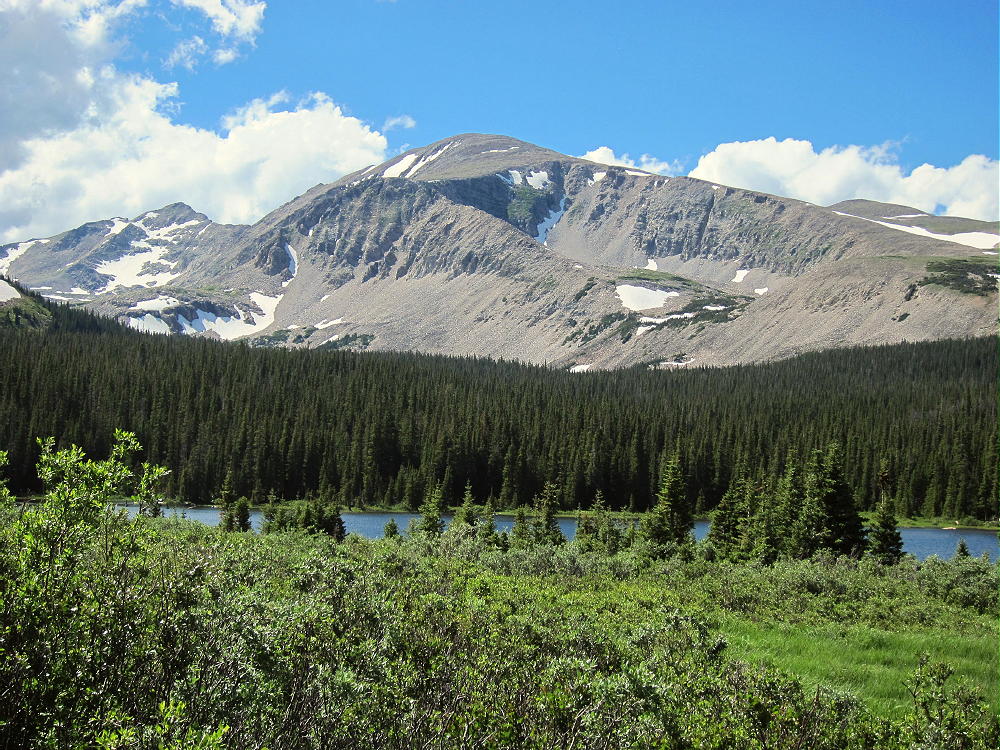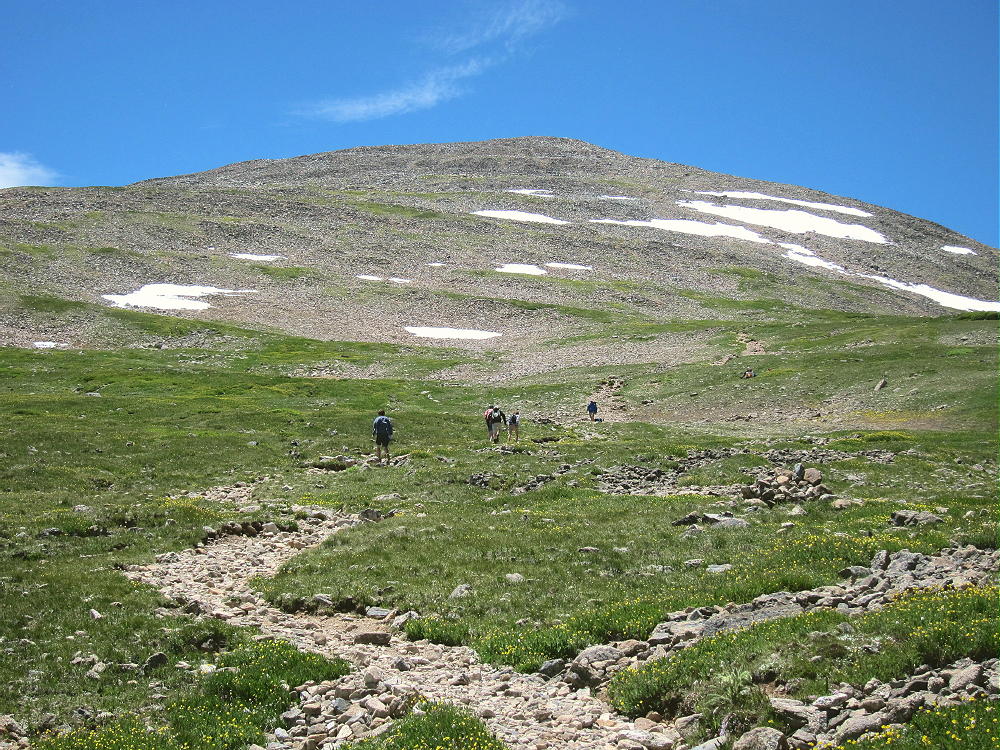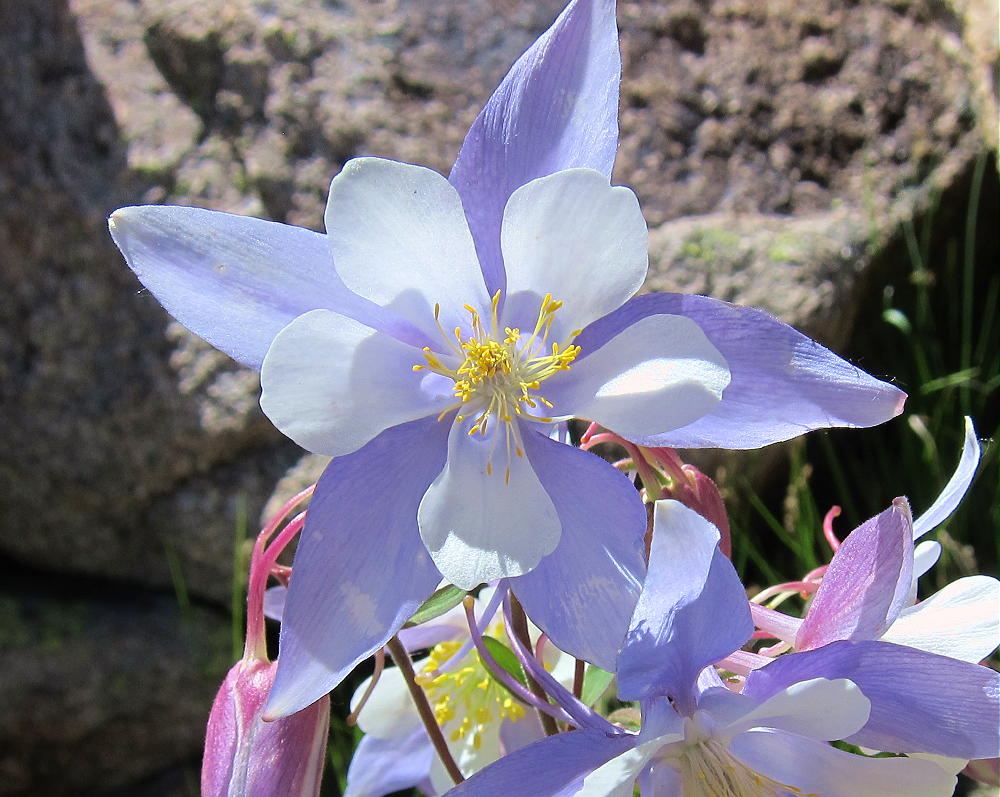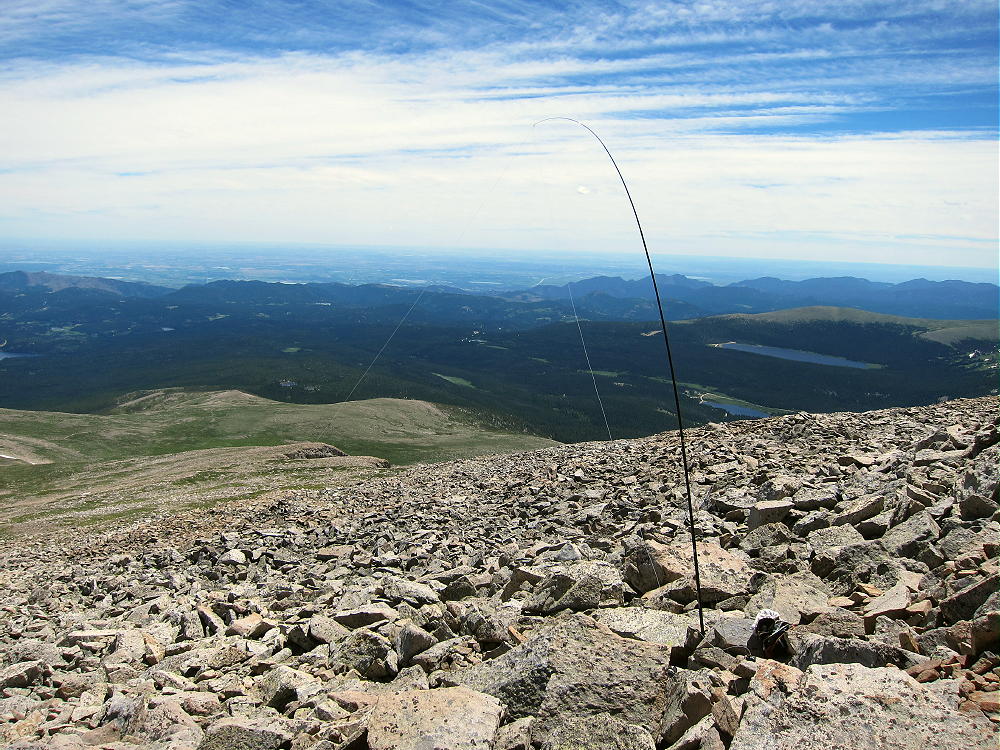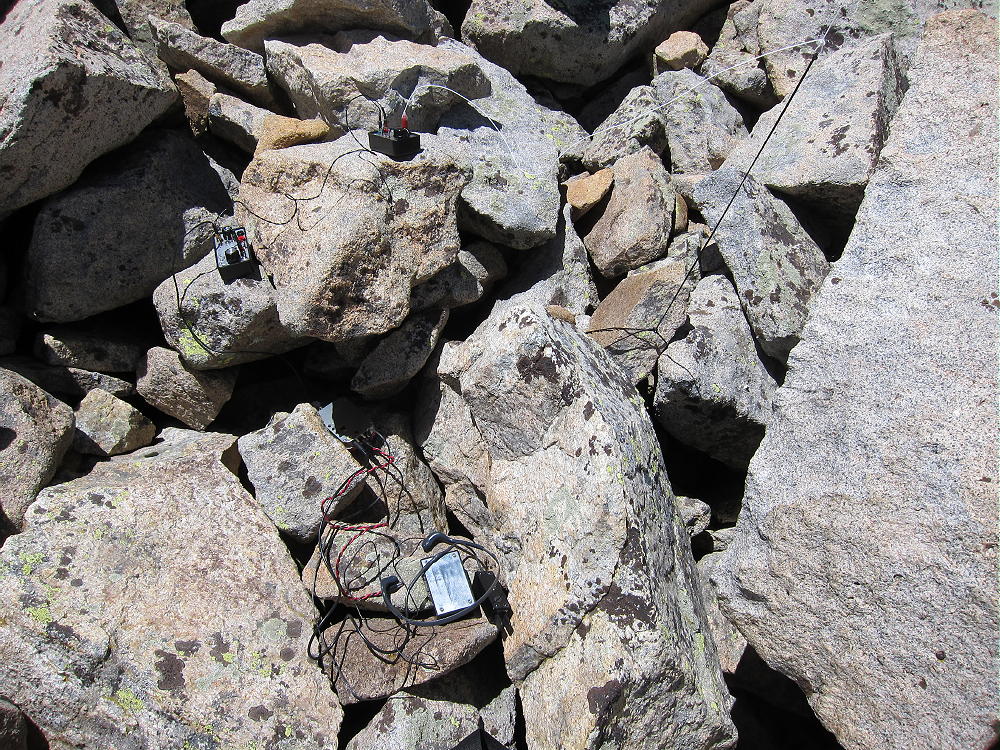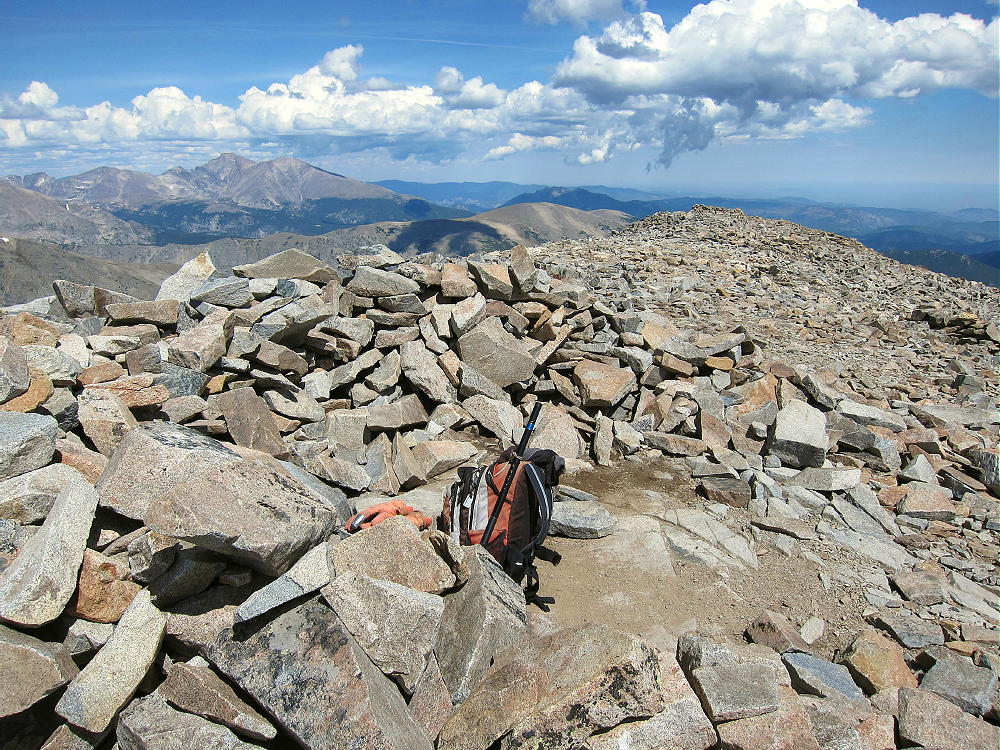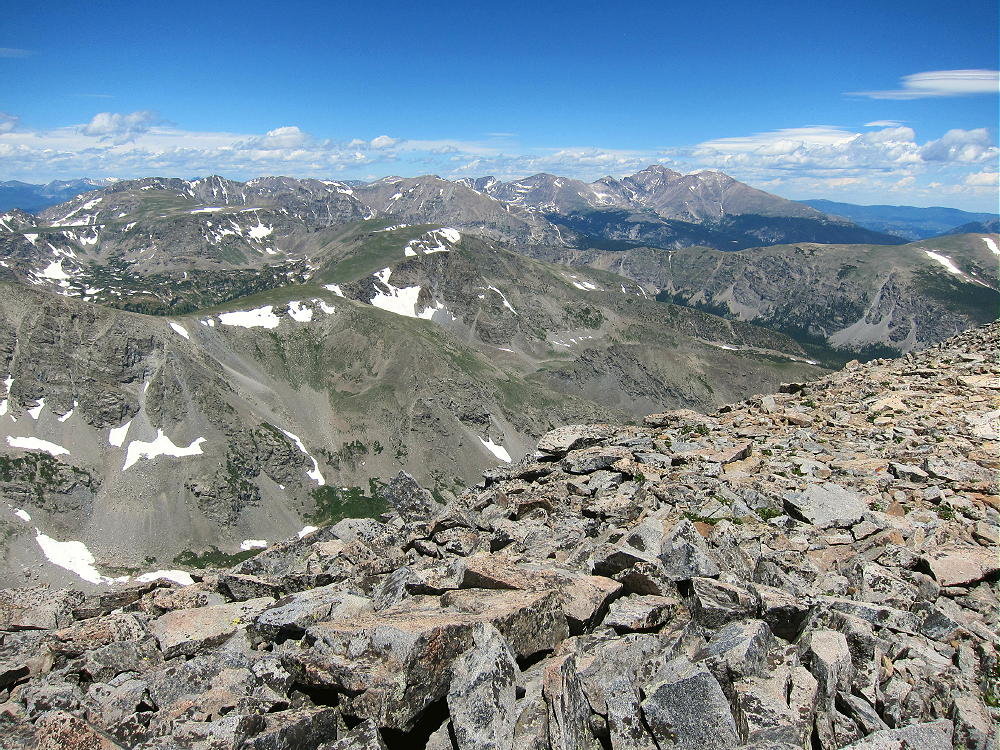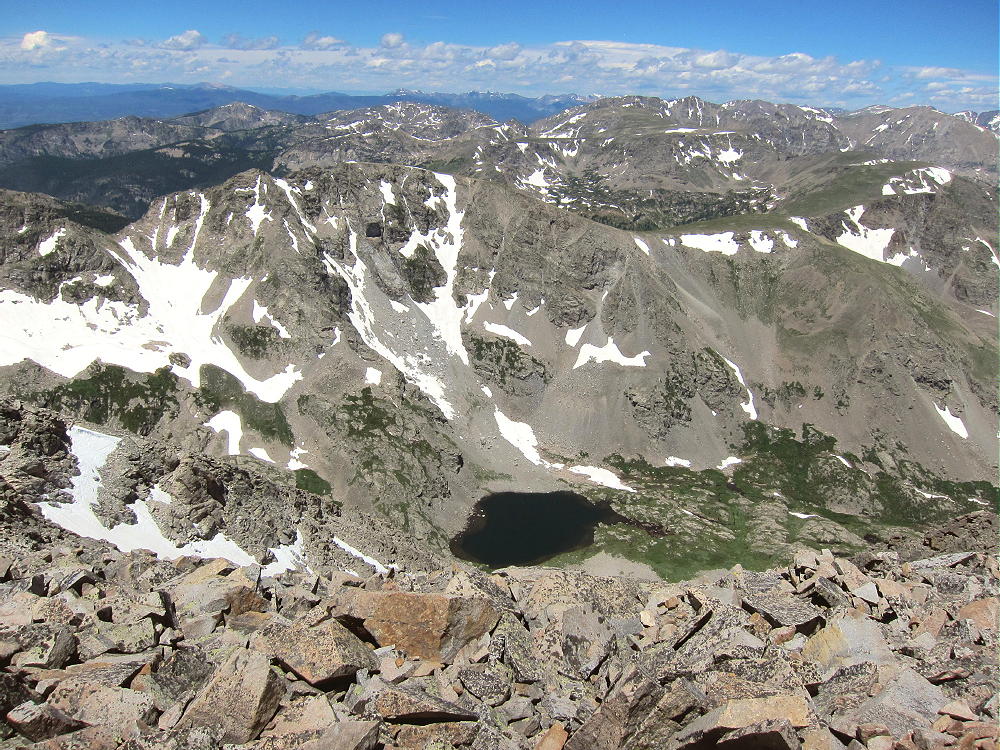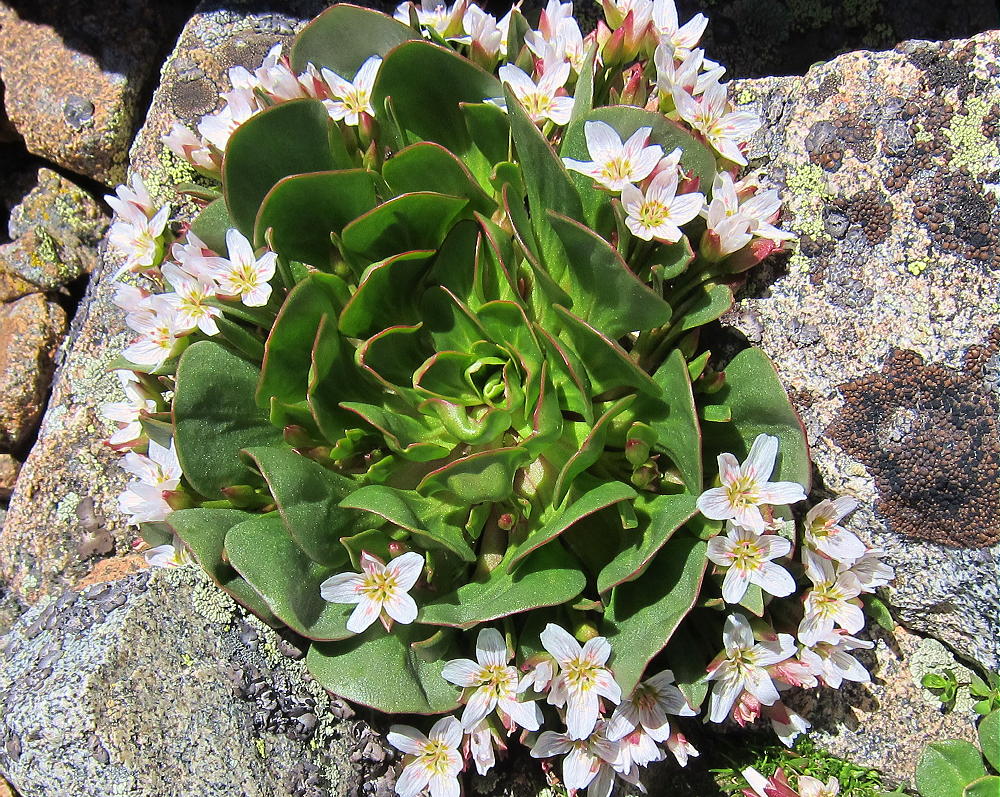W0C/FR-013
Mount Audubon
4030 m / 13223 ft
July 12, 2015
Sep 1, 2016
By KX0R
Mount Audubon is a popular alpine summit in the Indian Peaks Wilderness west of Boulder, Colorado.
Key points:
• Brainard Lake Recreation Area
• Roosevelt National Forest
• Fun trail all the way to the top
• Spectacular views
• Fine radio site
• Busy trailhead
• ~ 4 miles one-way
• ~ 2800 vertical feet
• SOTA Classic!
Driving Directions:
• Drive west from Boulder via Highway 119 to Nederland.
• Turn north on Highway 72, the Peak-to-Peak Highway.
• Drive to the turn-off to Ward, but don’t turn yet.
• Continue on Highway 72 about 100 yards – turn west on the marked paved road FR-112 to the Indian Peaks Wilderness.
• Continue about 4 miles to the Brainard Lake Recreation Area.
Useful details:
The route to Audubon is in the Indian Peaks Wilderness; this is a protected area with special rules. There’s a charge for entry via the Brainard Lake Road. It’s essential to start early, especially on a summer weekend; the area is very popular, and parking is limited.
Early in the morning it may be possible to drive to the Mitchell Lake Trailhead, and to park there – otherwise, parking may be available near Brainard Lake. Parking at Brainard Lake adds about 3/4 mile to the hike – each direction. At the Mitchell Lake Trailhead, be careful to start out on the Mount Audubon Trail – not the Mitchell Lake Trail.
Mount Audubon is visible from Brainard Lake – it’s the huge 13-er to the northwest.
One of the most accessible high peaks in the northern Front Range, Audubon is climbed often. The trail is worn and rocky from decades of heavy use.
The Hike:
• Start up the Mount Audubon Trail
• The route leads north through the forest and up to timberline southeast of the summit on a good trail
• The trail continues north through an open alpine area to a split – the left (west) fork leads to the peak.
• The route ascends across the open tundra, eventually reaching a broad saddle northeast of the peak.
• The last half-mile is up through large rocks, where multiple paths climb to the large summit.
There are fine views from the trail and the peak, snow lingers into the summer, and alpine wildflowers cover the high slopes – the popularity of this mountain is justified!
Activation Details:
Mount Audubon is a friendly place in good weather. Although it was sunny and dry when I was there, the wind was so roaring so strong that I wasn’t sure if I could do my activation. Although the spacious summit is almost flat, I couldn’t set up on the windy top; I searched for a spot with minimal wind. I found my place on the east side, about 30 feet below the summit, among large boulders. The wind was roaring and hissing across the edge of the peak above, but I was able to set up my pole in the rocks and guy it securely. My spot was well south of the trail, off the routes used by other hikers.
Once the pole and wire were up and dancing, there were no more problems getting on the air and starting the activation. Setting up in a rock-pile is sometimes the only worthwhile option when winds are extreme; considerable care is required to avoid dropping small, critical items down into holes among the large rocks!
Mount Audubon stands prominently east of the Continental Divide; the summit is thousands of feet above the lower mountains and plains below. Audubon has a wide-open view of the populated areas to the east; it’s surely an excellent VHF/UHF site. Other high mountains are north, west, and south of Audubon, but they’re not high enough to adversely affect propagation of HF signals. This is an excellent HF site; the noise level is low, because little development is near the peak. On a day when many people are on the summit, it’s probably a good idea to set up HF gear out of the way, slightly down from the popular top.
Despite the incredible wind, I had a fine SOTA activation on Audubon, with 31 contacts on 10-14-18-21 MHz CW. The session lasted about 70 minutes, and I was delighted at my results!
After I took down the pole and put away my gear, I climbed up on top to take some pictures; it was difficult to stand on the west side of the summit, where the wind was strongest. A few other people came and went, but not many stayed more than a few minutes!
Dry windy weather is generally safer than storms and lightning. Mount Audubon is one of the highest mountains in its area, so it often has cumulus clouds and dangerous lightning. It should be avoided if storms are in the forecast, or if dark-bottomed clouds are forming in the area. An early start is essential to minimize the risk of bad weather in spring and summer.
Mount Audubon is a SOTA Classic:
• Spectacular wilderness location
• Beautiful alpine hike up an accessible trail
• Significant vertical gain
• Wonderful setting with high peaks all around
• Great HF/VHF/UHF radio site
There are numerous other high SOTA peaks within sight of Mount Audubon. However, most of these summits require significant hikes, comparable to the trip up Audubon. There are few possibilities for a reasonable dual activation, except for a few lower mountains located near roads lower down. These lower possibilities include:
W0C/FR-061 Taylor Mountain 2779m / 9134ft 4 points
W0C/FR-174 Bald Mountain 2783m / 9147ft 4 points
Camping offers a way to activate multiple high summits in the area. Numerous forest campgrounds and campsites are within a few miles of Mount Audubon; many of these campgrounds are popular, so reservations may be required. Roosevelt National Forest has a few places where dispersed camping is allowed. Backpack camping in the Indian Peaks Wilderness is a possibility, but a permit is required, and special rules apply.
Mount Audubon is a Classic SOTA Peak – a real alpine jewel on the right day!
73
George Carey Fuller
KX0R
![]() !! WARNING !! There are old mountaineers, and
bold mountaineers... there are no old-bold mountaineers.
Hiking and mountain climbing are potentially hazardous activities particularly in Colorado with its extreme elevations. I am not accepting responsibility for any death or injury resulting from activations based on my trip reports. Proper training, experience, and personal capability assessment is required - enjoy!
!! WARNING !! There are old mountaineers, and
bold mountaineers... there are no old-bold mountaineers.
Hiking and mountain climbing are potentially hazardous activities particularly in Colorado with its extreme elevations. I am not accepting responsibility for any death or injury resulting from activations based on my trip reports. Proper training, experience, and personal capability assessment is required - enjoy!











